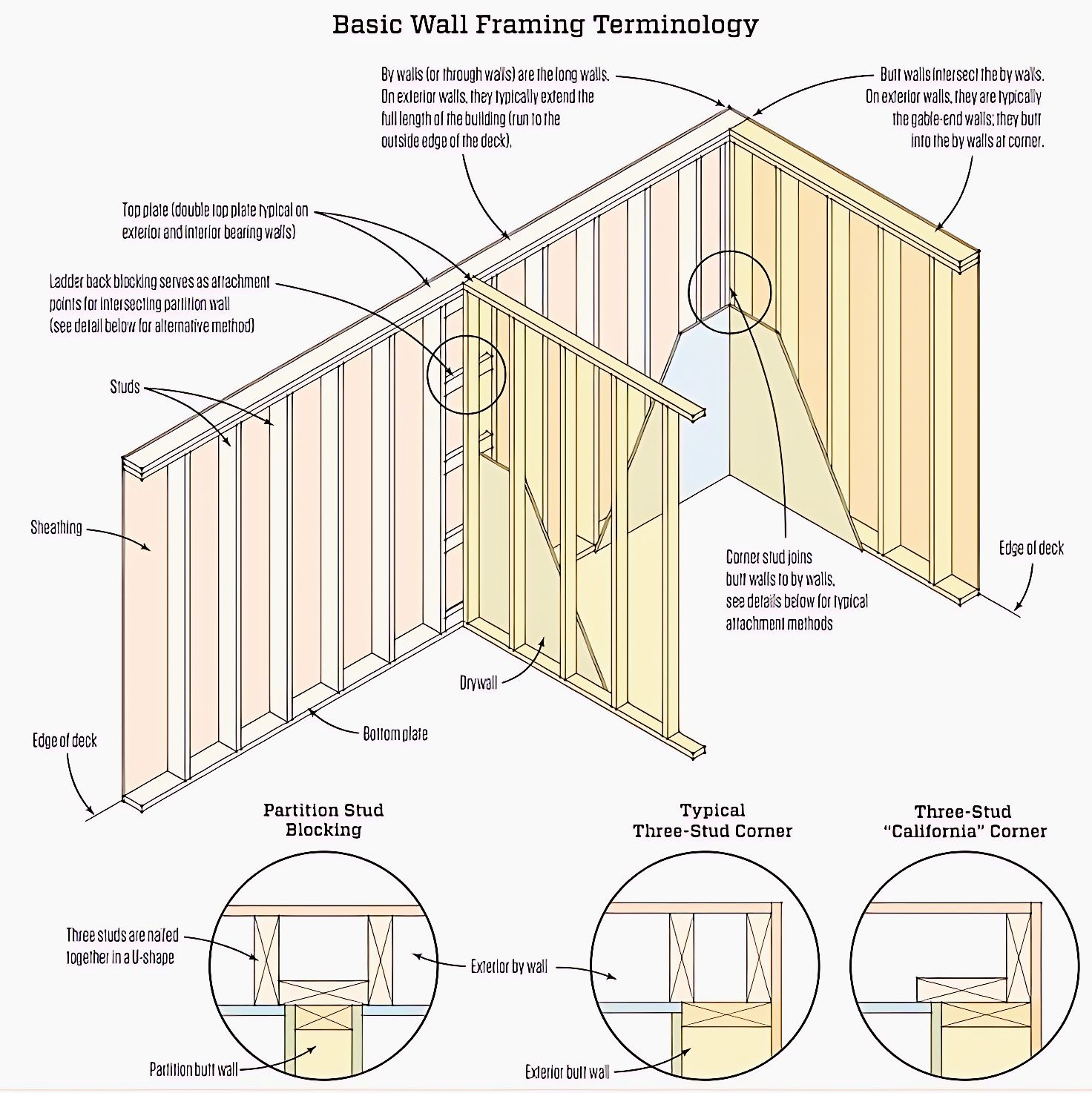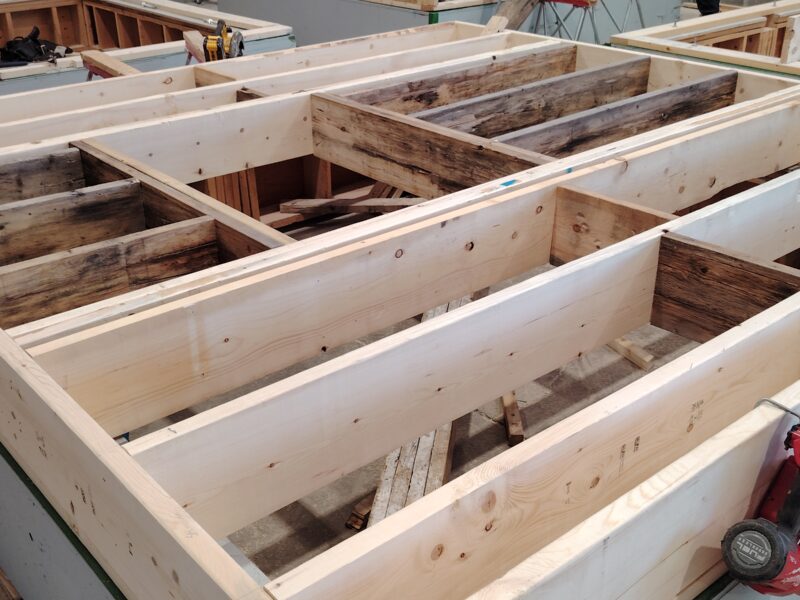Overall Purpose:
This comprehensive diagram serves as an excellent resource for understanding the foundational terminology and construction methods used in residential and light commercial wood-frame building. It clarifies how walls are assembled, how they intersect and form corners, and the purpose of each component in creating a strong, stable, and finish-ready structure. It’s particularly useful for carpentry students, DIY builders, and anyone involved in the early stages of building construction.
Main Isometric View (Top Section):
This view shows a corner of a building with intersecting walls, revealing the internal framing structure.
* Top plate (double top plate typical on exterior and interior bearing walls): This refers to the horizontal lumber pieces that cap the top of the wall studs. A “double top plate” (two layers) is common to provide additional strength, tie the walls together, and distribute loads from above (like floor joists or roof rafters).
* Studs: These are the primary vertical framing members that form the skeleton of the wall, supporting the loads from the roof and floors above and providing attachment points for sheathing and drywall.
* Sheathing: This is the exterior structural paneling (e.g., plywood or OSB) applied to the outside face of the studs. It provides racking strength (resistance to sideways forces like wind) and a substrate for exterior finishes.
* Bottom plate: This is the horizontal member at the base of the wall frame, providing a foundation for the studs and anchoring the wall to the subfloor or foundation.
* Edge of deck: This label points to the floor platform, indicating that the walls are built on top of the subfloor/decking.
* By walls (for through walls) are the long walls. On exterior walls, they typically extend the full length of the building true to the outside edge of the deck: This explanation clarifies that “by walls” are continuous, uninterrupted walls.
* Butt walls intersect the by walls. On exterior walls, they are typically the gable-end walls; they butt into the by walls at corner: This explains that “butt walls” terminate against another wall, forming an intersection.
* Drywall: This is the interior wall finish material (gypsum board) applied to the inside face of the studs.
* Ladder back blocking serves as attachment points for intersecting partition wall (see detail below for alternative method): This highlights a method where horizontal “blocking” (short pieces of lumber) are installed between studs to provide solid nailing surfaces for an interior partition wall that butts into an exterior wall.
* Corner stud joins butt walls to by walls, see details below for typical attachment methods: This points to the corner where two walls meet and refers to the detailed illustrations below for how this corner is constructed.
Detailed Corner and Intersection Methods (Bottom Section):
This section provides close-up diagrams of different common framing techniques for wall intersections and corners, designed to provide adequate nailing surfaces for interior and exterior finishes.
* Partition Stud Blocking:
* Exterior by wall: This refers to the main exterior wall that runs continuously.
* Exterior butt wall: This refers to the exterior wall that terminates against the “by wall.”
* Partition butt wall: This is an interior wall that butts into an exterior wall.
* The diagram shows horizontal blocking between the studs of the “by wall” where the partition wall intersects, providing a solid surface to attach the partition wall’s end stud.
* Typical Three-Stud Corner:
* Exterior by wall: The continuous exterior wall.
* Exterior butt wall: The exterior wall that butts into the “by wall.”
* This method uses three studs configured to create a solid nailing surface for interior drywall on both faces of the corner, as well as exterior sheathing and cladding. One stud is placed at the end of the “butt wall,” and two studs are nailed together to form the “by wall” corner, creating an interior corner pocket.
* “Three studs are nailed together in a U-shape”: This annotation describes the common configuration for the corner where the “by wall” studs meet.
* Three-Stud “California” Corner:
* This is an alternative to the “Typical Three-Stud Corner.”
* It also uses three studs but arranges them slightly differently to create a wider interior cavity, potentially allowing for more insulation in the corner or easier wiring/plumbing access. Instead of two studs forming a U-shape, often a cripple stud or blocking is used to create the interior nailing surface while leaving the main studs separated.


